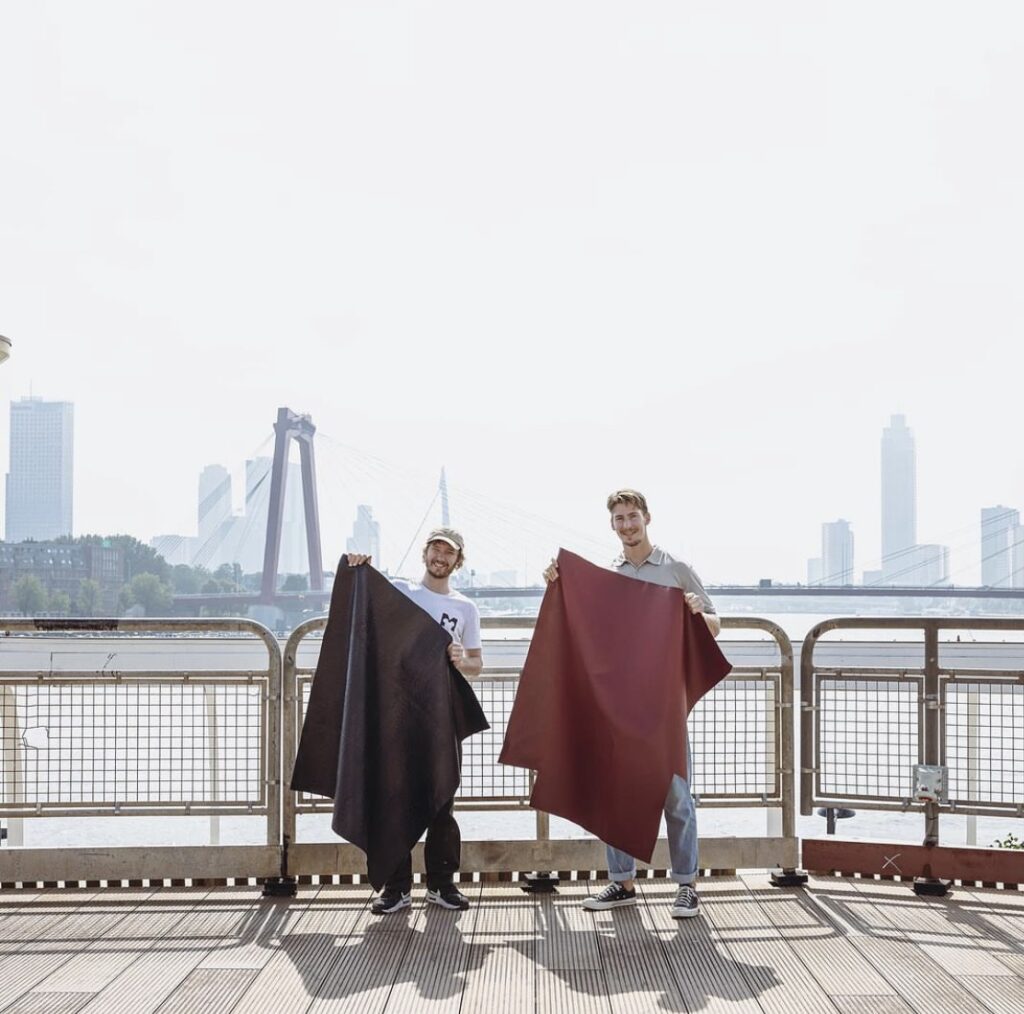Fruits are all the rage when it comes to natural alternatives to leather! This is the case of Fruitleather Rotterdamled by Hugo de Boon and his partner Koen Meerkerk, who have embarked on a remarkable journey to transform waste into value. In this exclusive interview with Pearls magazine, Hugo talks about his career, the creation of Fruitleather and his aspirations for the future.
From the Netherlands to the world of sustainability
Originally from the Netherlands, Hugo de Boon and Koen Meerkerk’s journey into the world of sustainability was fortuitous. Their company, Fruitleather Rotterdam, was born out of a university project at the Willem de Koning Academy of Art in 2016. The duo were struck by the staggering amount of fruit waste in local markets and were driven to find a solution. Initially aiming to create natural dyes from wasted fruit, the discovery of a textile-like material created from drying fruit pulp propelled them towards the creation of Fruitleather. This innovative material demonstrates their commitment to reducing waste and finding sustainable alternatives in the fashion industry.
How did Fruitleather come about?
“Fruitleather represents a pioneering leap in sustainable materials, offering an alternative to leather derived mainly from mango waste,” explains Hugo. “This initiative not only addresses the problem of food waste but also offers a viable solution to the environmentally harmful leather tanning industry.”
Versatile use: from fashion to furniture
Fruitleather’s application extends far beyond a simple alternative to traditional leather; it has carved out a niche for itself in the fashion industry. The material’s versatility is evident in its use for handbags, card holders, sneaker details and even furniture.
“Fruitleather’s composition is 76 percent mango blended with a natural binder, 14 percent natural cotton, and a 10 percent water-based PU coating.”
Fruitleather’s innovative approach has not gone unnoticed, leading to collaborations with fashion brands such as Saye, who incorporated Fruitleather into one of their sneaker designs. As for the future, Hugo de Boon is enthusiastic about the idea of increasing production. This expansion aims to make Fruitleather more accessible and to foster further collaborations, ensuring a wider impact on the fashion industry and beyond.
Photos: Fruitleather Rotterdam








